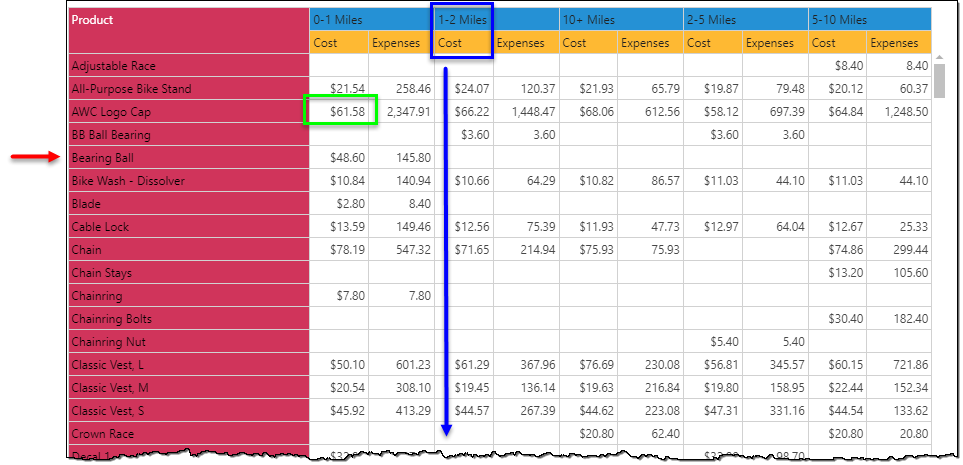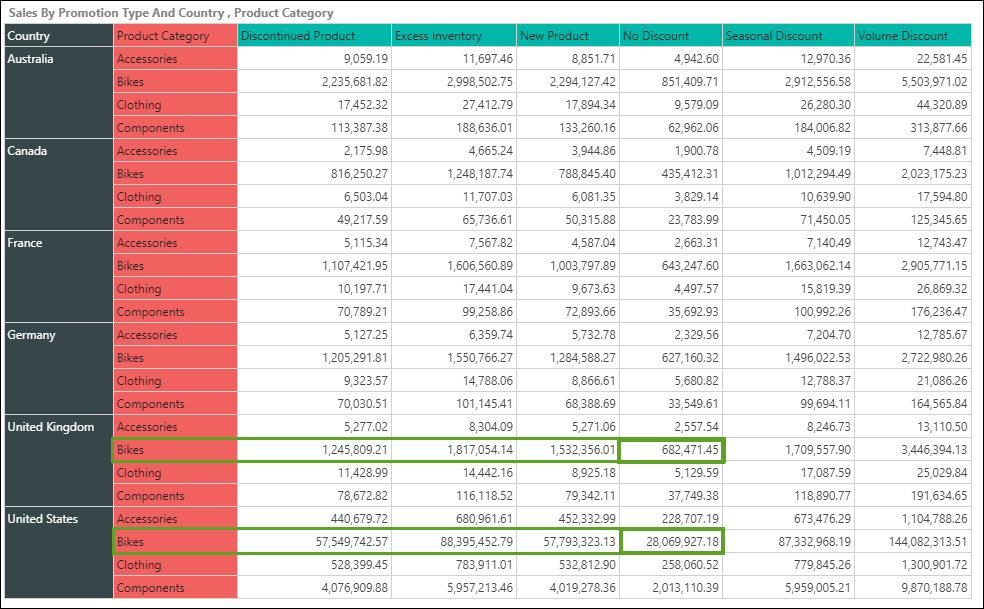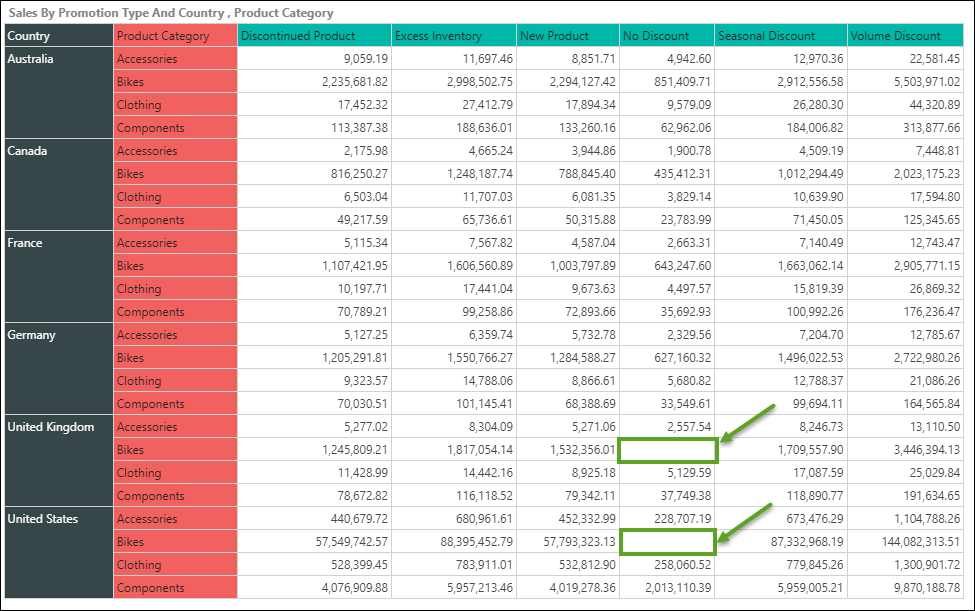'Eliminations' functionality allows you to remove specific data elements from your queries, visualizations and reports. Depending on how the feature is used, eliminating items is similar to not selecting them in the first place. However, there are numerous use cases where this is not possible or convenient. The specific 'Eliminations' functionality and the Eliminations wizard dialog (covered in this topic) address these issues.
Use cases for Eliminations
The best way to understand eliminations functionality is by way of example and use case. If you had a large dimension of 600 product items and you wanted to analyze it in a grid, you could simply drop the entire hierarchy into the rows drop zone (for example) and see the entire listing by your chosen metric. (In the example shown below we are looking at all products by 2 metrics, broken out by commute distance).

Member Elimination
The first use case is to look at the grid above, but eliminate the 'Bearing Ball' product entirely from the analysis (red arrow). While this could easily be done by opening the product hierarchy element tree and deselecting 'Bearing Ball', it would be far quicker and much similar to simply right-click on bearing ball and choose 'Eliminate' from the context menu. This interactive option also offers the advantage of using the function when you cannot access the element tree (say in dashboard). More importantly, the eliminate action mechanism tells Pyramid to keep track of this deselected item in the Eliminations wizard, which then acts as both a venue to see a log of such actions as well as a place to undo them without having to go through and find the items in the (large) element tree listing. Further, when coupled with the ability to click and select on multiple items from the visual (CTRL+click), its possible to laser out items visually and effectively based on the visible query results.
Data Point Elimination
The second use case, which is functionally far more critical, is to eliminate COMBINATIONS of items from a query. For example, to eliminate the cell or data point of 'AWC Logo Cap, 0-1 Miles for Cost', you can right click on the grid cell in the above grid and choose 'Eliminate Data Point (green box). Alternatively, you can right click on the cost measure under 1-2 Miles and elect to eliminate either the 'cost' element (like the first use case above) or the combination of '1-2 miles, cost' - effectively eliminating the entire column (blue box and arrow). This capability CANNOT be resolved with element trees - since the individual trees do not offer a venue to mix and match combinations across the different hierarchies. The only way that can be done is by using the specialized Eliminations dialog (to add, edit and delete such combinations) or via the context menu as described.
Note: Totals are not supported when using eliminations.
Note: Combinations that involve measures are not possible in earlier versions of Pyramid.
Accessing Eliminations
After building your query, open the Eliminations wizard from the Query tab.


From the Eliminations wizard you can either edit and / or delete existing elimination items created previously (either from the context menu or via the dialog) or you can add new ones. To add a new elimination target, click the plus sign to create a new 'elimination target'. Next define the 'elimination settings' for that target.
- Select the affected hierarchies which contain the element combinations that will be excluded (red box).
- Only hierarchies currently in the active query appear in the listing.
- You can build different hierarchical combinations using multiple targets.
- For each hierarchy (green box), select the element that will be eliminated (orange box).
- You can only select one element per hierarchy per target.
When completed, click Apply. The target logic, then builds a cross-combination of these items to define the data points that will be eliminated from the query.
Note: For each elimination settings selection, a single element may be selected from each of the given hierarchies.
Edit and Remove Eliminations
To edit eliminations, open the Eliminations wizard, select the existing targets and edit the selections as required.
Similarly, to delete eliminations, open the Eliminations wizard and click the "x" to eliminate a target definition. Alternatively, use the Remove Eliminations option to remove all targets from the ribbon menu.
Example
In the following example, two data points are eliminated from the query. The query contains three hierarchies: Country, Product Category, and Promotion Type. From the query the following two data points will be excluded:
- Bikes, with No Discount, in the United Kingdom
- Bikes, with No Discount, in the United States

Each data point requires a separate elimination settings configuration (green highlight below), within the same eliminations target:

The given data points are removed from the query:
